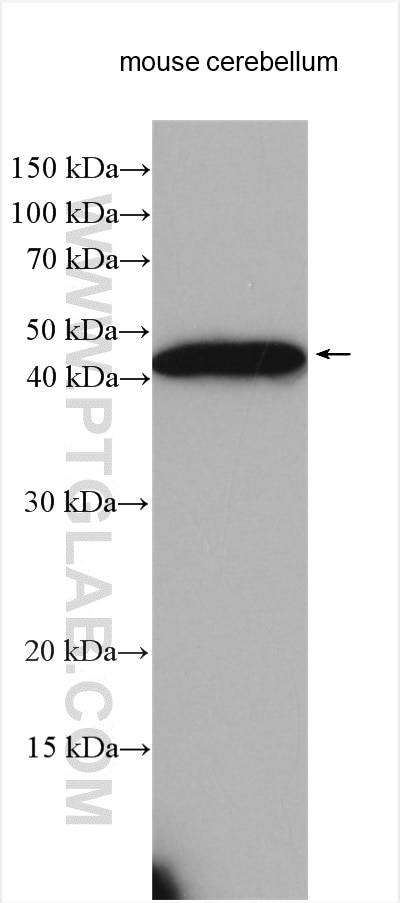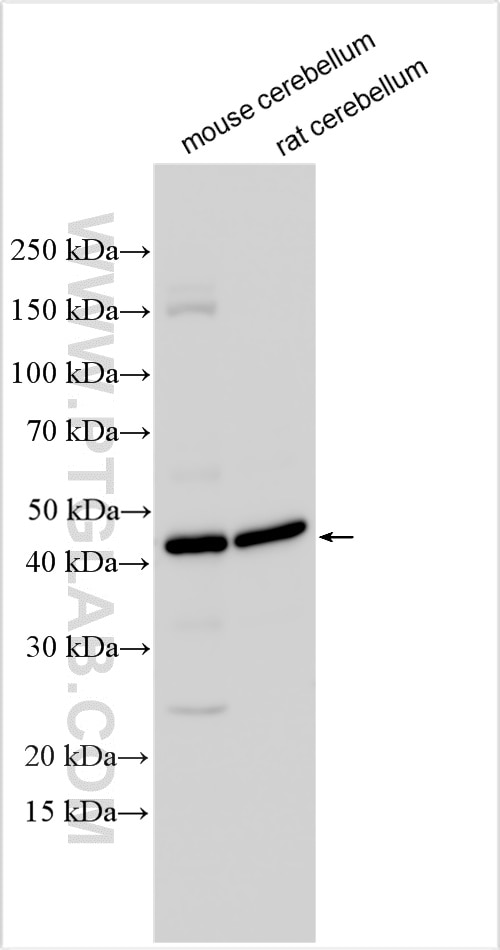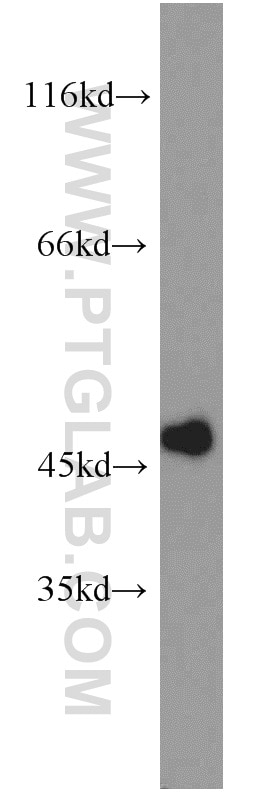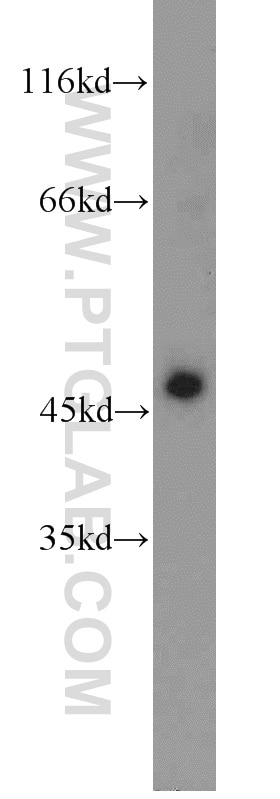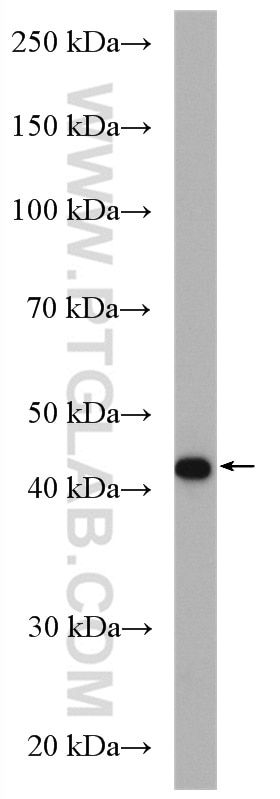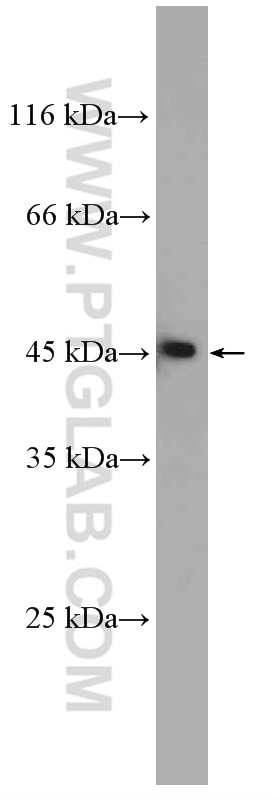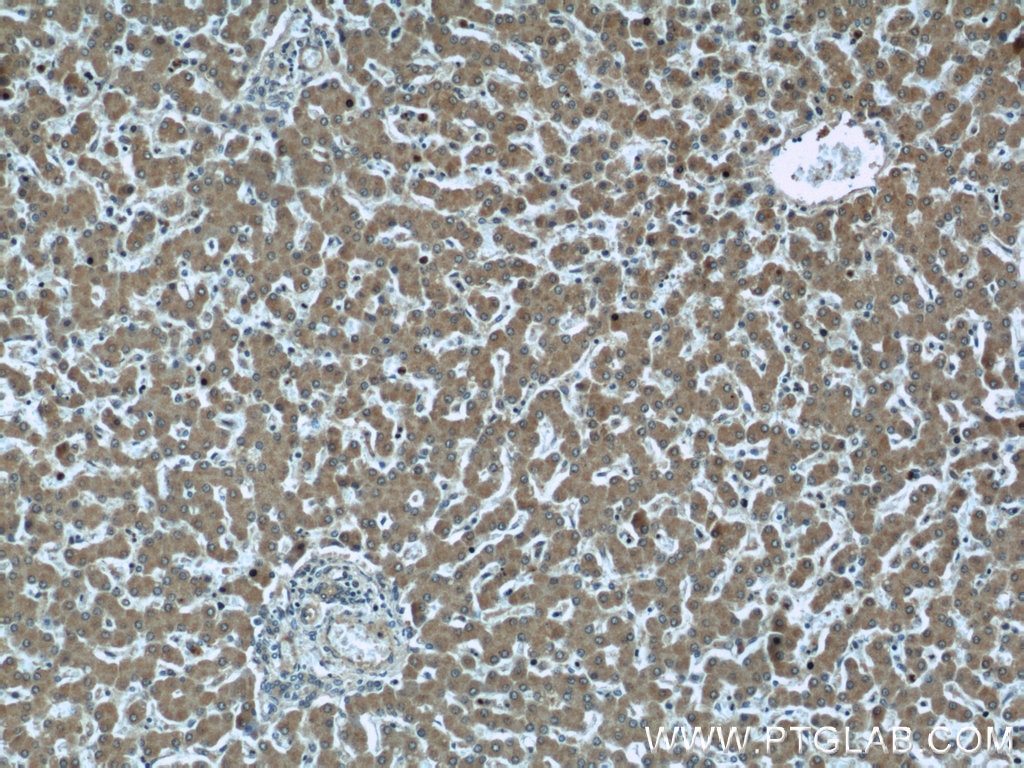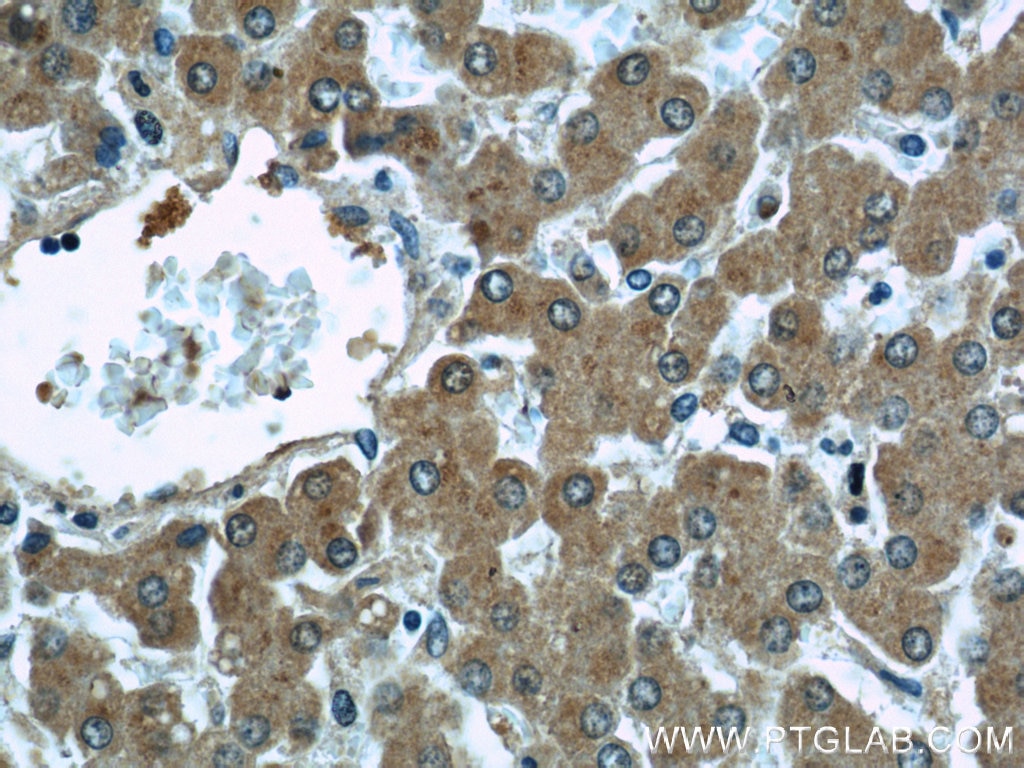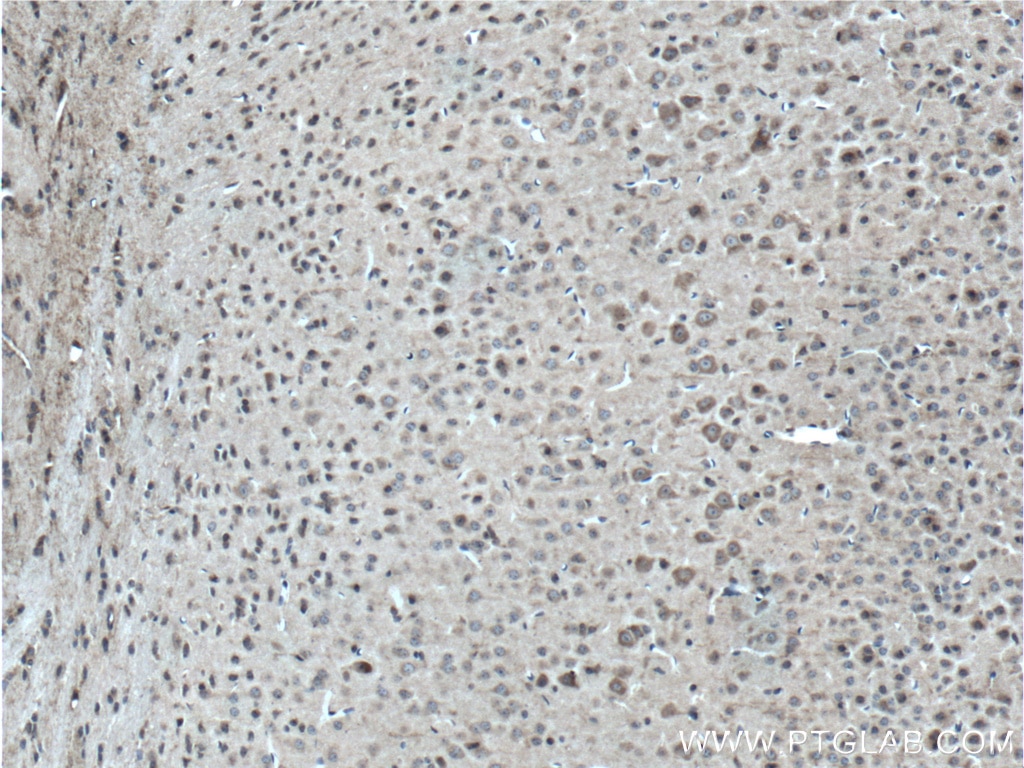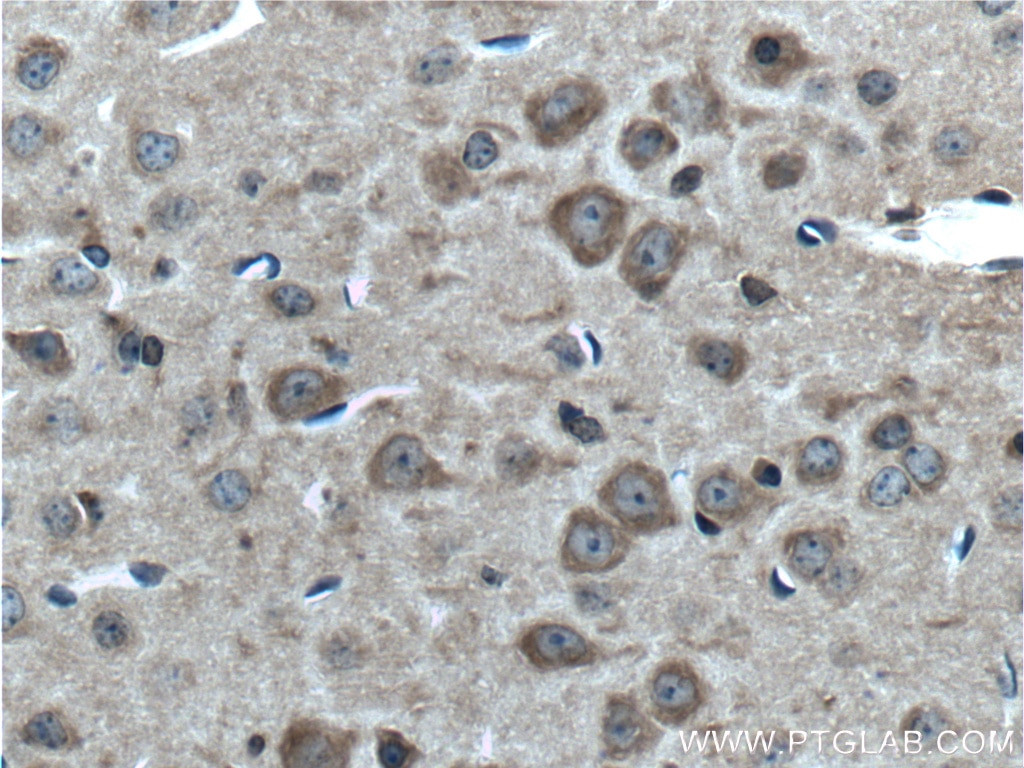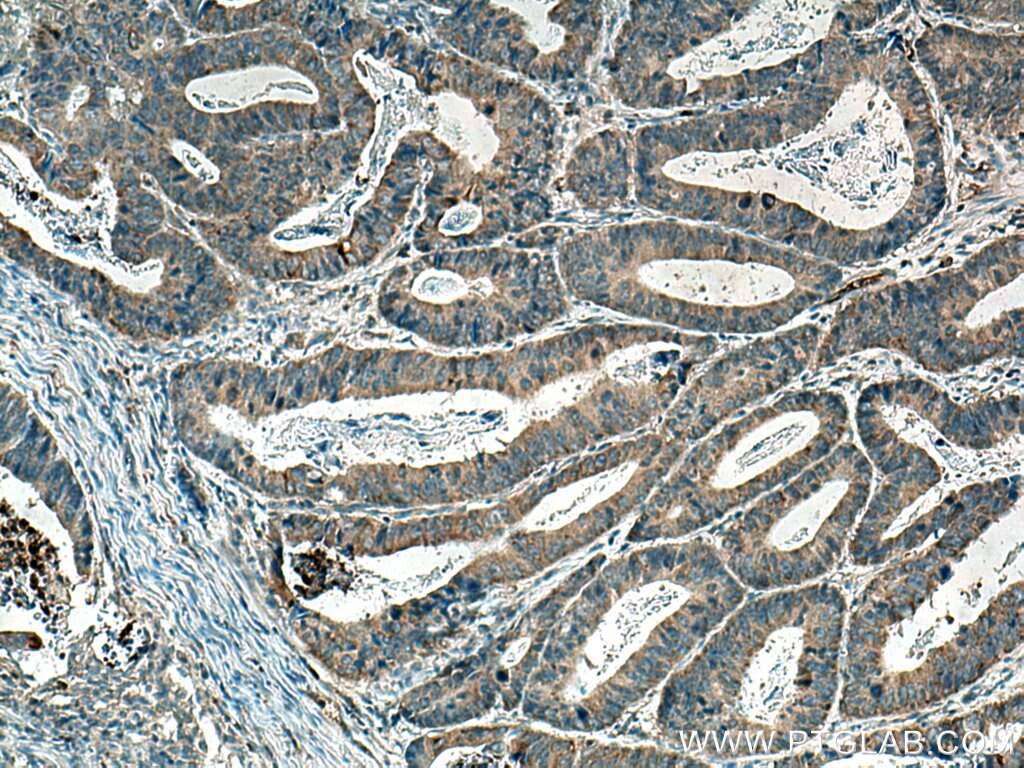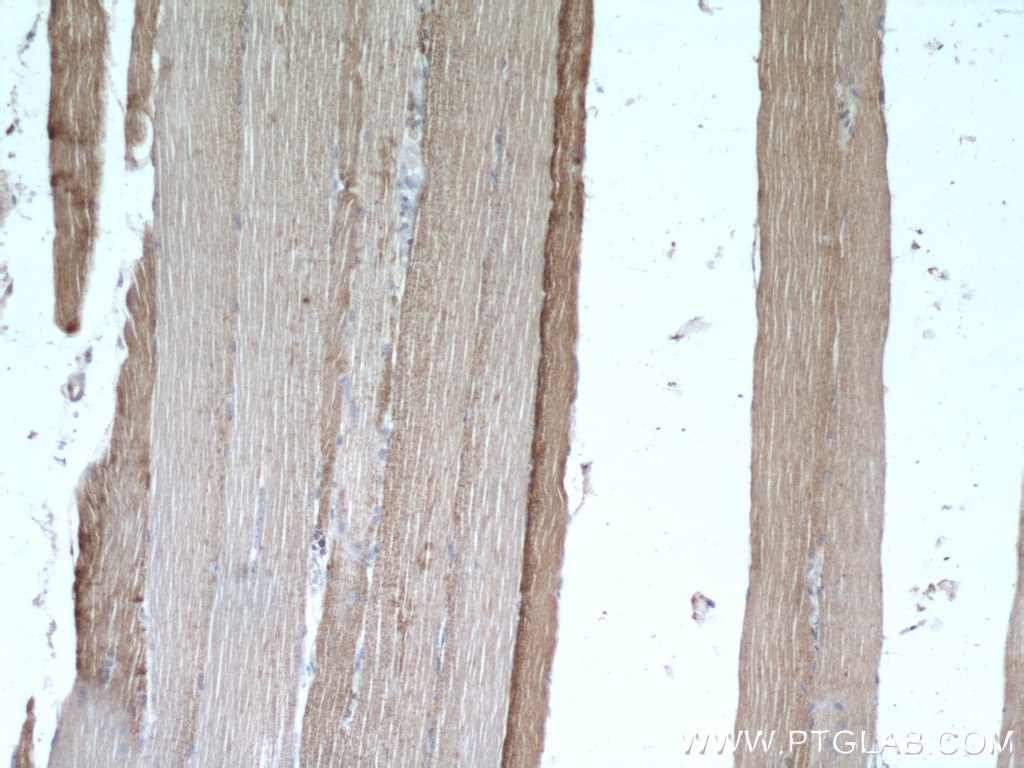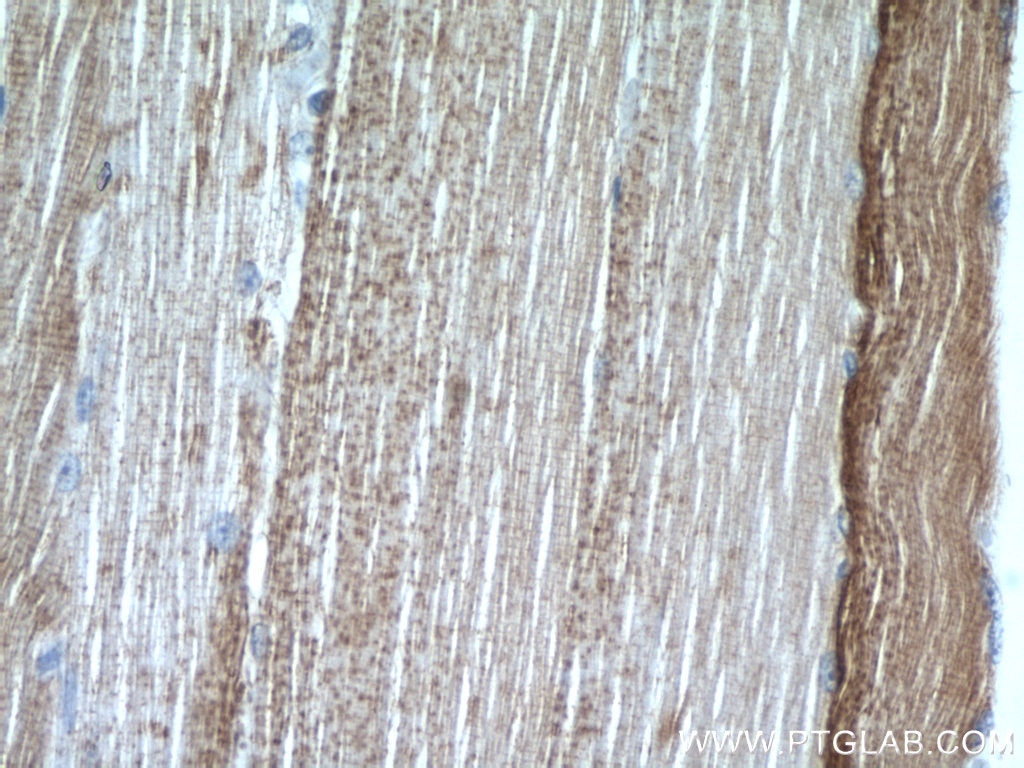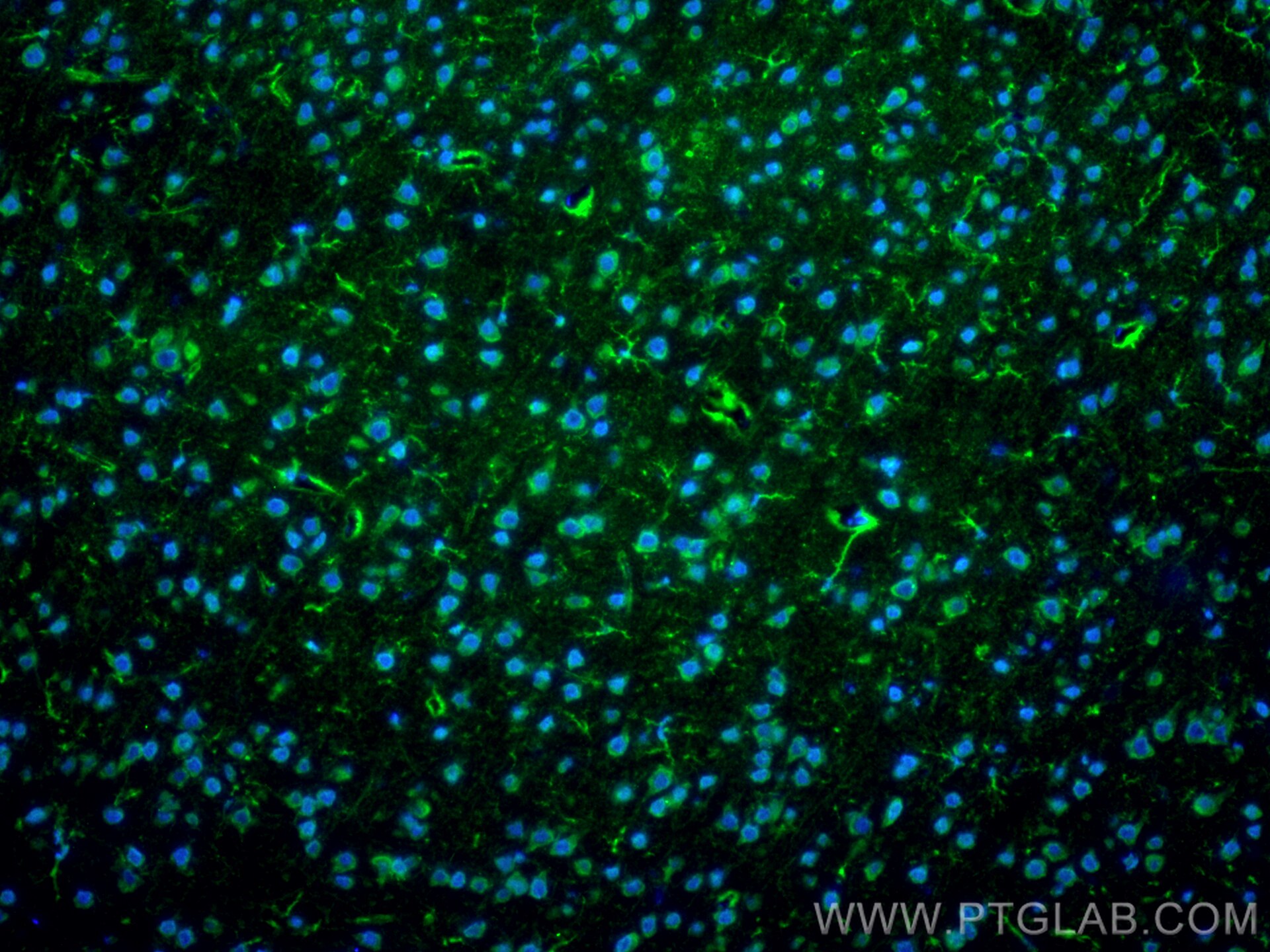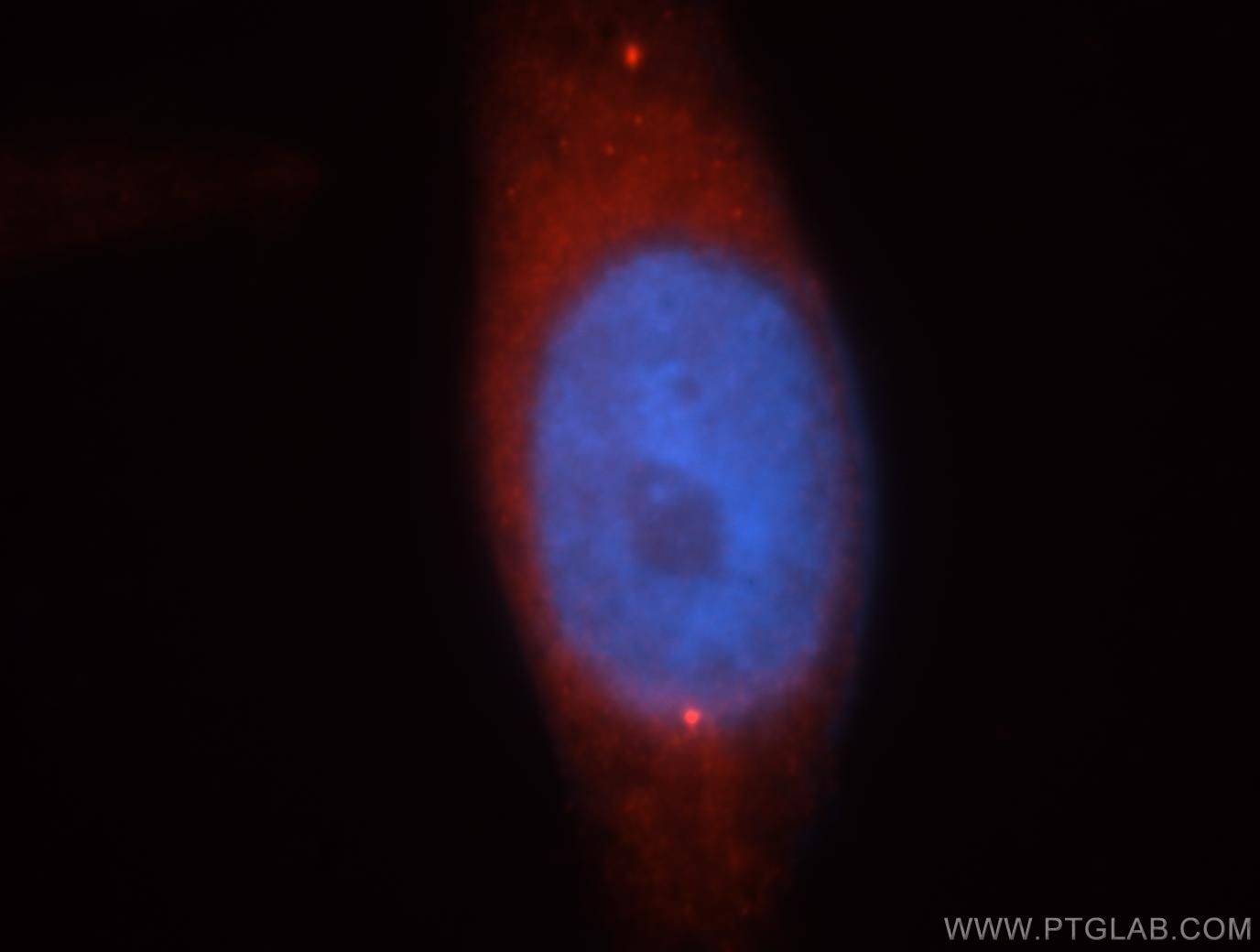- Featured Product
- KD/KO Validated
MAGT1 Polyklonaler Antikörper
MAGT1 Polyklonal Antikörper für WB, IHC, IF/ICC, IF-P, ELISA
Wirt / Isotyp
Kaninchen / IgG
Getestete Reaktivität
human, Maus, Ratte
Anwendung
WB, IHC, IF/ICC, IF-P, ELISA
Konjugation
Unkonjugiert
Kat-Nr. : 17430-1-AP
Synonyme
Geprüfte Anwendungen
| Erfolgreiche Detektion in WB | Maus-Cerebellum-Gewebe, COLO 320-Zellen, HEK-293-Zellen, Maus-Kolongewebe, Mausherzgewebe, Ratten-Cerebellum-Gewebe |
| Erfolgreiche Detektion in IHC | humanes Lebergewebe, humanes Kolonkarzinomgewebe, humanes Skelettmuskelgewebe, Maushirngewebe Hinweis: Antigendemaskierung mit TE-Puffer pH 9,0 empfohlen. (*) Wahlweise kann die Antigendemaskierung auch mit Citratpuffer pH 6,0 erfolgen. |
| Erfolgreiche Detektion in IF-P | Maushirngewebe |
| Erfolgreiche Detektion in IF/ICC | HepG2-Zellen, C2C12-Zellen |
Empfohlene Verdünnung
| Anwendung | Verdünnung |
|---|---|
| Western Blot (WB) | WB : 1:500-1:1000 |
| Immunhistochemie (IHC) | IHC : 1:20-1:200 |
| Immunfluoreszenz (IF)-P | IF-P : 1:200-1:800 |
| Immunfluoreszenz (IF)/ICC | IF/ICC : 1:10-1:100 |
| It is recommended that this reagent should be titrated in each testing system to obtain optimal results. | |
| Sample-dependent, check data in validation data gallery | |
Veröffentlichte Anwendungen
| KD/KO | See 7 publications below |
| WB | See 20 publications below |
| IF | See 6 publications below |
Produktinformation
17430-1-AP bindet in WB, IHC, IF/ICC, IF-P, ELISA MAGT1 und zeigt Reaktivität mit human, Maus, Ratten
| Getestete Reaktivität | human, Maus, Ratte |
| In Publikationen genannte Reaktivität | human, Maus, Ratte |
| Wirt / Isotyp | Kaninchen / IgG |
| Klonalität | Polyklonal |
| Typ | Antikörper |
| Immunogen | MAGT1 fusion protein Ag11496 |
| Vollständiger Name | magnesium transporter 1 |
| Berechnetes Molekulargewicht | 335 aa, 38 kDa |
| Beobachtetes Molekulargewicht | 45-47 kDa |
| GenBank-Zugangsnummer | BC060842 |
| Gene symbol | MAGT1 |
| Gene ID (NCBI) | 84061 |
| Konjugation | Unkonjugiert |
| Form | Liquid |
| Reinigungsmethode | Antigen-Affinitätsreinigung |
| Lagerungspuffer | PBS with 0.02% sodium azide and 50% glycerol |
| Lagerungsbedingungen | Bei -20°C lagern. Nach dem Versand ein Jahr lang stabil Aliquotieren ist bei -20oC Lagerung nicht notwendig. 20ul Größen enthalten 0,1% BSA. |
Hintergrundinformationen
MAGT1 is a mammalian Mg2+-selective transporter being required for cellular magnesium uptake and vertebrate embryonic development. It possesses five putative transmembrane (TM) regions with a cleavage site, a N-glycosylation site, and a number of phosphorylation sites. Recently mutations in MAGT1 has been found to be asscociated with a novel X-linked human immunodeficiency. The MAGT1 protein was undetectable in the patients'cells by western blot or immunofluorescent cell surface staining. MAGT1 had been detected as 38 kDa (PMID: 18705540) or 45-47 kDa (PMID: 27383987) by western blot.
Protokolle
| PRODUKTSPEZIFISCHE PROTOKOLLE | |
|---|---|
| WB protocol for MAGT1 antibody 17430-1-AP | Protokoll herunterladen |
| IHC protocol for MAGT1 antibody 17430-1-AP | Protokoll herunterladenl |
| IF protocol for MAGT1 antibody 17430-1-AP | Protokoll herunterladen |
| STANDARD-PROTOKOLLE | |
|---|---|
| Klicken Sie hier, um unsere Standardprotokolle anzuzeigen |
Publikationen
| Species | Application | Title |
|---|---|---|
Nature Genetic dissection of Flaviviridae host factors through genome-scale CRISPR screens.
| ||
Adv Sci (Weinh) A Magnesium-Enriched 3D Culture System that Mimics the Bone Development Microenvironment for Vascularized Bone Regeneration. | ||
Small Magnetic Field Boosts the Transmembrane Transport Efficiency of Magnesium Ions from PLLA Bone Scaffold | ||
J Cell Biol Oxidoreductase activity is necessary for N-glycosylation of cysteine-proximal acceptor sites in glycoproteins.
| ||
Cell Death Dis Maintenance of magnesium homeostasis by NUF2 promotes protein synthesis and anaplastic thyroid cancer progression
|
Rezensionen
The reviews below have been submitted by verified Proteintech customers who received an incentive for providing their feedback.
FH Natalia (Verified Customer) (09-26-2019) | To my knowledge, this one is the only one commercially available antibody that works well for WB application to detect MagT1. It cross-reacts with TUSC3 a little, only because these are highly homological proteins.
|
